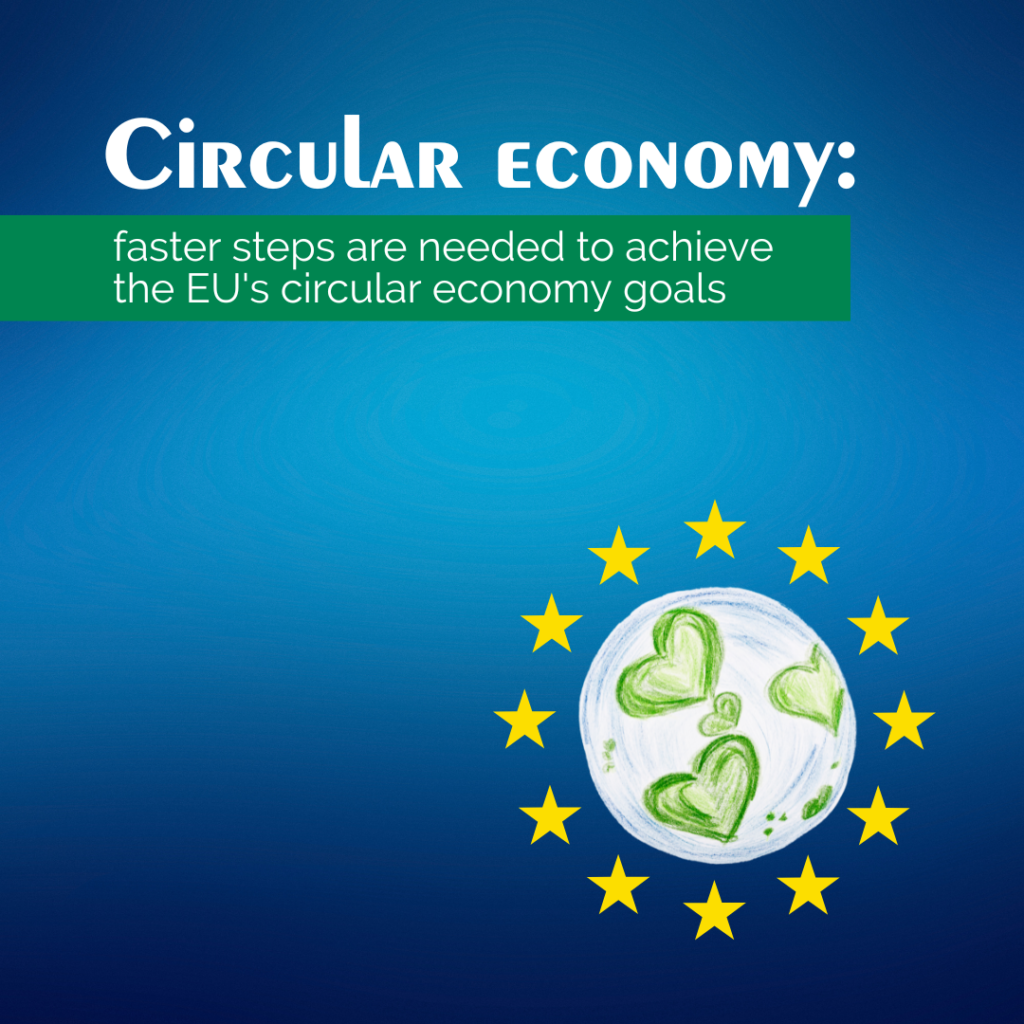According to the European Commission’s revised Circular Economy Monitoring Framework1, published on 15 May 2023, the EU must continue its efforts to reduce consumption and reduce waste generation with the aim of achieving a more circular economy.
The rate of increase in resource extraction is the main cause of the triple planetary crisis: climate change, biodiversity loss and pollution. The revised monitoring system emphasizes the need to accelerate the transition to a circular economy, as circularity makes the model of economic growth more sustainable, competitive and resilient to current and future challenges of energy and security.
The revised system of circular economy monitoring includes new indicators such as “material footprint” and “resource productivity”. These indicators monitor the material efficiency of the EU production and consumption system. It includes new indicators to measure progress towards waste prevention targets. All of them are key building blocks for achieving zero pollution. In addition, the monitoring system tracks the circular economy’s contribution to sustainability, climate neutrality and resilience, taking into account the consumption footprint, greenhouse gas emissions from production activities, dependence on material imports and the EU’s self-sufficiency in critical raw materials.
The data show that although production in the EU has become more efficient in terms of resource use, the level of consumption remains very high and should decrease in the future. In 2020, each European “was responsible” for 35 kg of plastic packaging, which is 25% more than in 2010. Waste management in the EU has become more sustainable, but significant disparities remain between member states and serious efforts are still needed to improve the management of some waste streams, particularly plastics.
Despite some improvements in circularity, the EU economy is still largely linear. For many metals and rare earth elements (such as lithium, gallium, and neodymium), the end-of-life recycling input rate is around 1%.
In recent years, circular economy sectors have become more innovative and grown in terms of investment, value added and jobs. In the EU, private investments in specific economic sectors relavant to the circular economy amounted to EUR 121.6 billion in 2021, equivalent to 0.8% of EU’s GDP. The sectors employed 4.3 million people, an increase of 11% compared with 2015, while the added value in the circular economy sectors increased by 27% to reach around EUR 299 billion.
EU greenhouse gas emissions from production activities decreased by around 25% in 2008-2021, showing that the transition to a circular economy plays an important role in meeting climate neutrality. However, the EU’s consumption footprint increased by 4% between 2010 and 2021.
Monitoring progress towards a circular economy is essential to assess the effectiveness of the EU policies and measures and to identify best practices for circularity. In 2018, the Commission adopted and EU monitoring framework for the circular economy to measure progress in the EU and its Member States based on available data from official European sources. It included ten indicators covering key aspects of circular economy and the priorities of the 2015 circular economy action plan priorities, addressing production and consumption, waste management, secondary materials, competitiveness and innovation.
As announced in the Circular Economy Action Plan of 20202, the circular economy monitoring framework has been revised to ensure its compliance with the latest circular economy priorities, taking into account climate neutrality and other priorities of the European Green Deal. It also responds to the recommendations from other EU institutions and stakeholders.
The revised framework is consistent with the indicators used for monitoring progress towards the 8th Environment Action Program3 objectives, the zero-pollution4 monitoring and outlook, the EU SDG indicators5and the EU resilience dashboard6.


